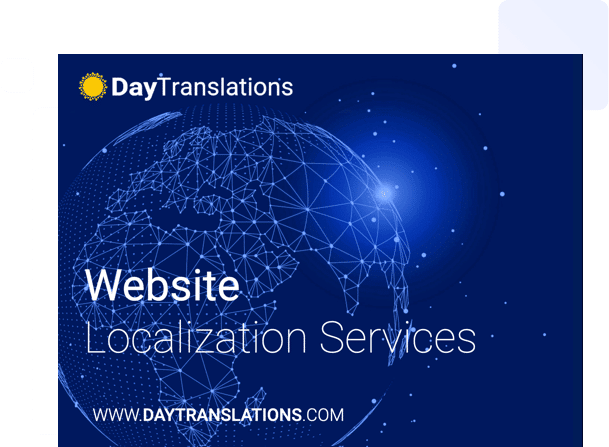Scaling your business beyond borders is awesome. However, it comes with a little challenge—communicating with customers, partners, and non-native employees who don’t speak your language.
As your company grows internationally, so does the communication gap, often leading to frustrated customers, lower satisfaction, and higher churn.
To avoid this, you need a sturdy multilingual communication strategy. In this article, we’ll share some tips your enterprise can use to build one.
Recruit with a multilingual mindset
Expanding your reach across the borders or serving a new audience with a different language means you need someone on your team who can respond in kind. So, start by recruiting competent employees who communicate in the language of your target audience.
This can be done in two ways: by hiring fluent non-native speakers or by hiring native professionals from the local region of your audience. You can decide based on your budget, the availability of talent, and the depth of cultural insight required.
For instance, fluent non-native speakers may offer broader versatility if they speak multiple languages. On the other hand, native professionals bring a deeper understanding of local customs, making them ideal for roles involving direct customer interaction or market-specific strategy.
Provide in-house language training for support teams
Imagine you run a local debt relief company and plan to expand further into new business markets with more linguistic and cultural differences.
The first thing that likely comes to mind is to overhaul your entire unilingual team so you can build a multilingual system with employees proficient in the languages needed. However, this might be cost-ineffective—think recruitment fees, onboarding, and other logistics—and impractical.
Instead of displacing your existing support team, simply create a language training program tailored to them. This provides an avenue for each support member to gain the necessary skills to communicate effectively with clients in their preferred languages. By the way, you get to retain the wealth of company-specific knowledge these employees already have.
Use multilingual platforms for internal communication
It’s not only your customers who need multilingual services; your employees do too. This is especially crucial if your employees have varying language backgrounds.
Without a shared process, it’s easy for your employees to misunderstand objectives and waste valuable meeting time trying to interpret rather than focusing on the task at hand. This breaks down your internal comms, slows productivity, and leads to team misalignment.
To fix this, you can adopt multilingual communication tools like Slack, Zoom, and Microsoft Teams. Slack has built-in integrations such as Lingmo and Google Translate, which enable it to provide in-meeting translations. Zoom and Teams similarly provide live captions and translation for chats.
Bridge language barriers with human interpreters
Slack and multilingual channels like Zoom are nothing short of remarkable. But, they’re not entirely efficient for conveying the tone, emotions, and linguistic idioms necessary to facilitate a productive conversation. Absence of these features creates a communication barrier.
And that’s where real-time interpreters come in. Imagine you’re in a meeting with a new high-value client with poor proficiency in English. And he’s comfortable speaking his native language, which you’re unable to speak.
You can simply employ the services of a certified human interpreter, like those at Day Translations, to seamlessly convey the messages between the two of you.
The good part is that professional human interpreters preserve the tone and gestures of your conversations while ensuring complete privacy. This makes them perfect for global employee meetings, client discussions, and partner collaborations.
Use AI-driven chatbots for multilingual assistance
According to the bot trend by Tidio, 82% of customers would rather use chatbots to resolve their queries than wait for a human agent. The problem, however, is that most traditional chatbots are unilingual or bilingual, meaning they can’t address your growing multilingual needs as an enterprise.
To solve that, you need AI-powered chatbots. Thanks to Machine Learning (ML) and Natural Language Processing (NLP), these bots can automatically analyze any data provided and respond in the customer’s preferred language.
Of course, your chatbot does not necessarily need to know every language, but it should be able to address your audience’s linguistic needs as required.
Localize your knowledge base and FAQ sections
Your knowledge base and FAQs serve as a repository of information, especially for leads you’re yet to convert. If you’re providing a cross-border service, you must localize them to your target audience’s language.
However, localization goes beyond adding a Google Translate plugin to your website; sometimes, the translation might be inaccurate or fail to account for the cultural nuances associated with each language.
Instead, you should create a different catalog of pages for all the language groups you serve. This ensures you reflect proper cultural phrasing, user behaviour per region, and appropriate references. Beyond FAQs and knowledge base, you might also need to localize other communication channels, including your emails/newsletters, voice support, social media chats, and ads.
At Day Translations, we go beyond simple translation—we localize your product, app, website, or game to feel truly native to each market.
-
Clearly communicate available language support
Giving your potential customers and future employees a heads-up about the language you support helps to avoid future communication problems. You can put it on your website’s About page, Career page, and in your messages, particularly during the early stages of communication.
It’s also essential to conduct market research on your target audience’s preferred language of communication so you can promptly make provisions before you expand into their market and onboard them.
Wrapping Up
One of the fastest ways to irk your potential customers is to tell them something like, “Sorry, we’re unable to provide this service in your language.” As an enterprise business, your customers, employees, and partners expect seamless communication in their preferred language.
Failure to deliver on their expectation leads to high customer churn rates, while also breaking your internal comms. To avoid that, proactively recruit with a multilingual mindset before expanding into new market grounds. You can also provide in-house language training to existing employees.
Embrace AI-driven chatbots for language assistance, especially within the support team. Use multilingual messaging platforms like Slack to streamline internal comms and clearly spell out the languages you support immediately.












Sorry, the comment form is closed at this time.